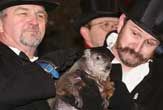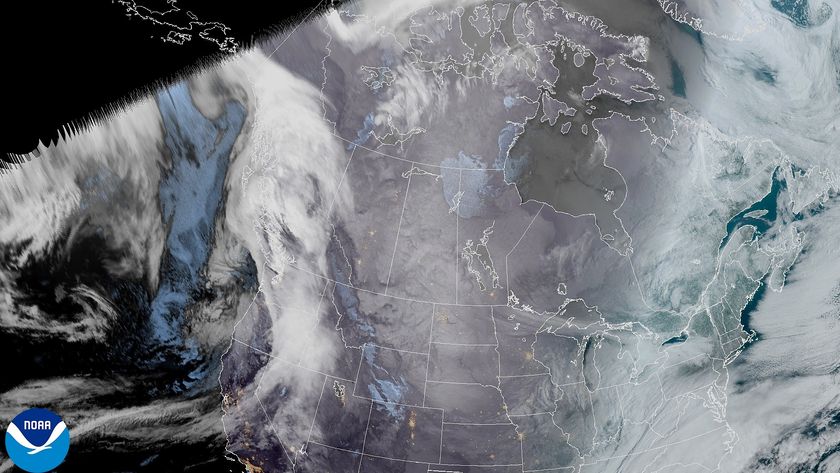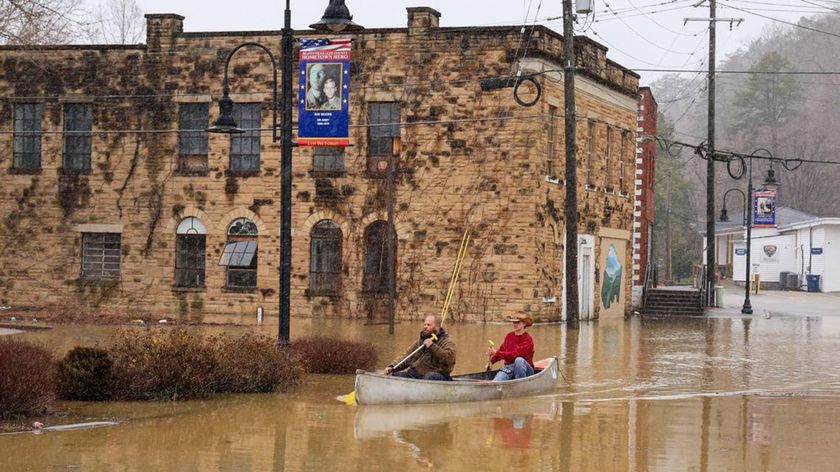How Accurate Are Punxsutawney Phil's Forecasts?

As the legend goes, if Punxsutawney Phil sees his shadow on Feb. 2, six more weeks of winter weather lay ahead; no shadow indicates an early spring. Phil, a groundhog, has been forecasting the weather on Groundhog Day for more than 120 years, but just how good is he at his job?
Not very, it turns out.
Punxsutawney Phil was first tasked with predicting the upcoming spring weather in 1887, and the process hasn't changed much since. The Punxsutawney Groundhog Club, of Punxsutawney, Penn., takes care of Phil year-round, and on each Feb. 2, members of the club's Inner Circle rouse Phil at sunrise to see if he casts a shadow. (Contrary to popular belief, Phil doesn't actually have to see his shadow — he just has to cast one to make his wintery prophecy.)
According to the Groundhog Club's records, the various incarnations of Punxsutawney Phil have predicted 99 forecasts of more winter and 15 early springs. (There are nine years without any records, and even the Punxsutawney Area Chamber of Commerce, which keeps track of these things, doesn't know what happened to Phil during those years.) Data from the Stormfax Almanac's data shows that Phil's six-week prognostications have been correct 39 percent of the time.
Phil does a shade poorer when you check his performance against actual weather outcomes since 1969, when the accuracy of weather records is less in question, said Tim Roche, a meteorologist at Weather Underground. From 1969 on, Phil's overall accuracy rate drops to 36 percent.
The groundhog's powers of prognostication are slightly better when he doesn't see his shadow, though. "When Phil predicted a short winter, he was much more likely to be right," Roche told Life's Little Mysteries. "Out of the 15 times that he didn't see his shadow and predicted an early spring, he got it right seven times – that's a 47 percent accuracy rate."
And how does that stand up against human forecasters? "If Punxsutawney Phil is right 39 percent of the time, that's much, much worse than a climatological prediction,” Roche said. “Even if you flip a coin, you'll still be right close to half of the time – that's a 50 percent accuracy rate. So you'll be better off flipping a coin than going by the groundhog's predictions."
Sign up for the Live Science daily newsletter now
Get the world’s most fascinating discoveries delivered straight to your inbox.
Ouch. To rule out the possibility that Roche just has a thing against groundhogs, we checked Phil's performance with David Unger, a meteorologist at the National Weather Service. It looks like Phil probably won't be getting a job at the NWS any time soon, either.
"It's extremely difficult to give an estimate of how accurate climate predictions are," Unger told Life's Little Mysteries. "But compared to the terms with which Groundhog's Day predictions are made – which are if the weather will be mild or not mild – then if our forecasts are about 60 percent accurate or higher, then we consider that to be a good estimate."
So there you go. The statistics suggest that you probably shouldn't pack up your snow gear based on Punxsutawney Phil's forecast. Then again, what do you expect? Phil is a groundhog, after all.
This article was provided by Life's Little Mysteries, a sister site to LiveScience.
Most Popular




